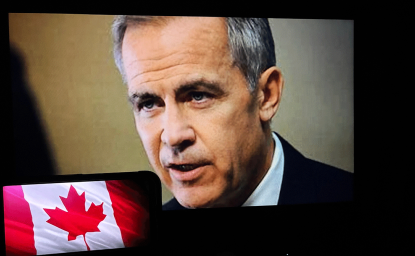On January 2, 2023, the presidency of the Mexican Supreme Court headed by Justice Arturo Zaldívar will come to an end. This presidency has at least two distinctive features. Since the judicial reform of 1994, Zaldivar was the first president of the highest court, and therefore of the council of the federal judiciary, who did not have a judicial career, and it is also the presidency that took place in an environment of change of the political coalition in the country. In this judicial and political context, in addition to the low public legitimacy of the judiciary, what were the political strategies developed by the head of the SCJ?
My answer to the question is that the presidency of Zaldívar developed three strategies: the agreement with the Executive Branch to promote internal changes based on an agenda of reforms set by him[1]; the use of the bases established by the 2011 human rights reform emphasizing the issues of structural equality and access to justice for sectors in vulnerable situations as a way to bring the judicial agenda closer to social demands that occupy a secondary place in mainstream politics (indigenous peoples, gender diversity, etc.), and containment of the onslaught of the Executive Branch.
Although each of these strategies can be traced in the four years of the administration, here I will focus on key events that account for them. Why focus on these three strategies of the presidency? Basically because the legacies of the administration can be read in this key.
The milestone in the policies of internal change was given by the “Reform With and For the Judiciary”[2], as it was called. This proposal was drafted by the Presidency of the SCJ of and presented by the Executive Branch to Congress. The proposal crystallized in a constitutional reform[3] and sreforms to secondary legislation[4] through which several aspects of the judicial organization were modified. First, it established gender parity in the composition of the Federal Judiciary and the creation of internal instances to prevent and prosecute sexual harassment. Second, it modified the mechanisms of access to the different positions by expanding those that are part of the judicial career and require transparent admission processes. Third, it modified the system of precedents, existing in the judiciary.[5] This judicial reform has been questioned for different reasons. Among them, the agreement with the Executive Branch and the scarce institutional participation in the development of the proposal. While I agree on the second issue, in relation to the first, personally, far from reading it as a weakness, I consider it as a mechanism to achieve the best possible result in a resistant internal context and in an external context that could articulate a judicial reform without the participation of the institution itself.
As for the relationship with society, although the rules of access to the jurisdiction of the highest court by the population have not been substantially modified, the agenda of access to justice and structural equality are probably the other distinctive feature of the administration. This policy was mainly reflected in the updating and development of action protocols with a perspective of disadvantaged groups.[6] Special mention should be made of the Federal Institute of Public Defense, which has carried out activities related to strategic litigation in cases involving vulnerable groups. We know that these actions do not have immediate effects and that their dissemination is not without resistance. It will be key to identify how this agenda has sufficiently permeated judicial decisions.
The last strategy to highlight is political contention. Zaldivar´s presidency has been marked by a political context whose central actor is the government of Andrés Manuel López Obrador that came to power on December 1 2018, with great popular support and majorities in Congress. This government expresses a political style that does not have the model of liberal democracy and the rule of law as gravitational centers. In this context, the SCJ presidency had several possible strategies, some of which would be confrontation or subordination. The option chosen, however, has been: containment. It was characterized by a good relationship of the president of the court with the relevant governmental instances, the maximum example of which was the support for the extension of Zaldívar's mandate for one more term. This controversial request (both politically and legally) was finally dropped. However, on the other hand, this strategy allowed the functioning of the PJ to be minimally affected in its lower instances and there were no serious punishments to the budget, in a rhetorically adverse context for the PJF.
In view of the above analysis, based on the agency capacity of the presidency of the highest court, I consider that beyond the material changes, one of the legacies of this presidency was to carry out a strategic policy that involved novel coalitions in the judicial policy of the highest Mexican court.
[1] In the words of Justice Arturo Zaldívar "when I became President of the Court we began a self-reform that started from a self-critical analysis and one year after having initiated this internal self-reform, we reached a consensus with the other two Branches, with the Executive and Legislative Branches to launch a Reform with and for the Federal Judicial Branch". SCJ/Press Release 005, https://www.internet2.scjn.gob.mx/red2/comunicados/noticia.asp?id=6713
[2] Made public on February 12, 2020. https://www.scjn.gob.mx/sites/default/files/carrusel_transarencia/documento/2020-02/Reforma-Judicial-PJF.pdf
[3] Approved on March 11, 2021
[4] Published on June 07, 2021.
[5] In the words of President Zaldívar: "Today we have a Judicial Branch that thanks to the Reform manages to elevate to constitutional and legal rank the fight against corruption, nepotism, sexual harassment and gender violence; the commitment to parity and substantive equality; the commitment to a different profile of federal judges, more sensitive, modern, committed to the people, with greater social and human sensitivity, and a public defender's office that reaches all corners of the country to defend the poorest people." https://www.internet2.scjn.gob.mx/red2/comunicados/noticia.asp?id=6713
[6] Protocols to judge with different perspectives were approved https://www.scjn.gob.mx/derechos-humanos/protocolos-de-actuacion
Author


Mexico Institute
The Mexico Institute seeks to improve understanding, communication, and cooperation between Mexico and the United States by promoting original research, encouraging public discussion, and proposing policy options for enhancing the bilateral relationship. A binational Advisory Board, chaired by Luis Téllez and Earl Anthony Wayne, oversees the work of the Mexico Institute. Read more

Explore More
Browse Insights & Analysis
Mark Carney to Lead Canada Amid Rising Trade Tensions With US



